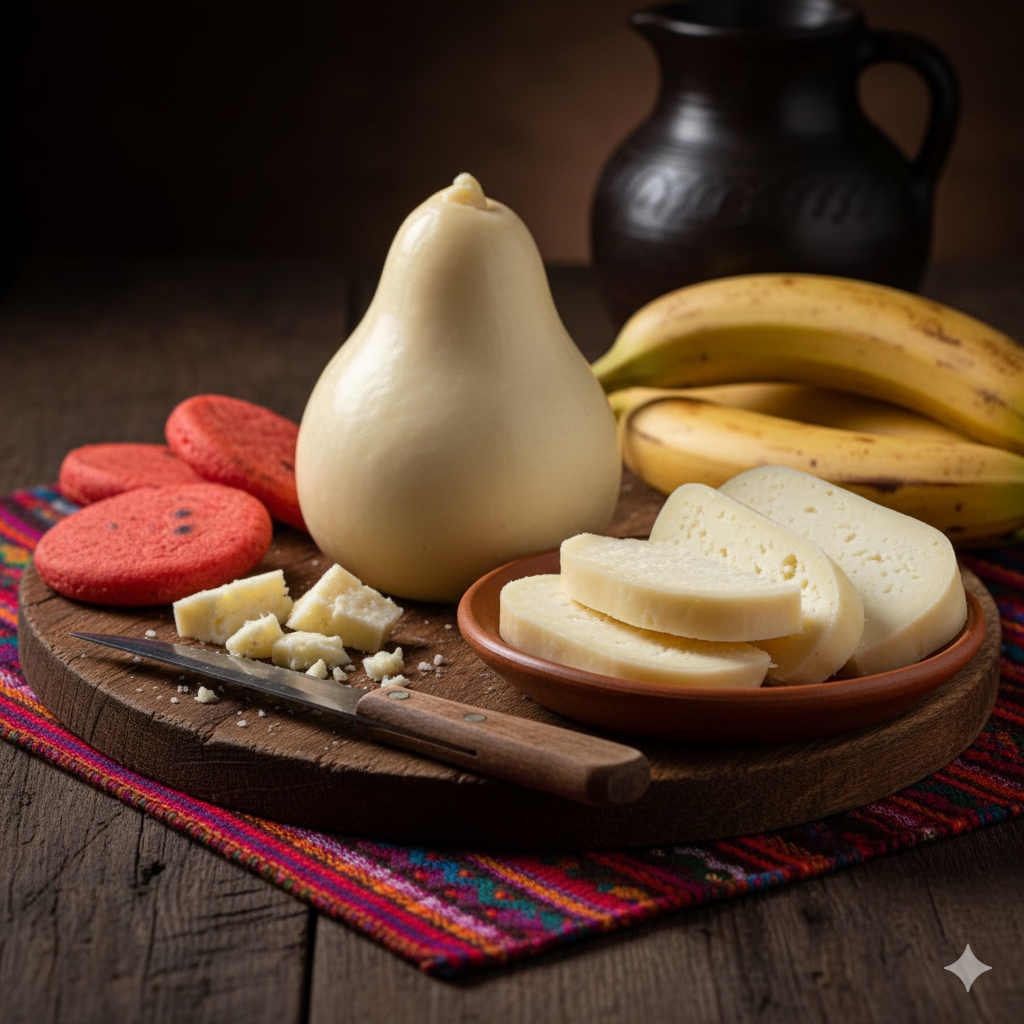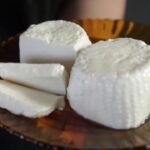Queso Pera is one of Colombia’s most beloved traditional cheeses—mild, firm, stretchy, and incredibly versatile in everyday cooking. Famous in regions like Boyacá, Cundinamarca, and Santander, this cheese stands out because of its pear-shaped form, which is how it earned the name “Queso Pera” (literally “pear cheese”). Whether eaten fresh, served with arepas, or melted into comfort dishes, Queso Pera has become a staple in Colombian households.
If you’re curious about Queso Pera Colombiano, its flavor, uses, and how to enjoy it, this guide walks you through everything you need to know.
What Is Queso Pera?
Queso Pera is a semi-hard Colombian cheese known for its firm texture, mild salty flavor, and smooth, elastic interior. It’s traditionally shaped into a small pear—hence the name—and made from cow’s milk. Many people compare it to mozzarella because of its stretchiness, though Queso Pera has a more pronounced dairy aroma and a slightly denser bite.
If you’ve ever wondered about queso pera en inglés, the closest translation is “pear-shaped cheese”, but it’s typically referred to simply as Queso Pera even in English contexts.
Origins of Queso Pera in Colombia
Although found across the country, Queso Pera Colombia is deeply rooted in the Andean regions. Local artisans developed the cheese using traditional curd-pulling techniques similar to those used in Italian pasta filata cheeses.
What makes Queso Pera unique is the hand-shaping process. The cheese is pulled, stretched, and finally molded into its iconic pear form, creating an attractive, artisanal product that reflects Colombian dairy culture.
Flavor & Texture: What to Expect

People love Queso Pera for its combination of:
-
Mild, milky flavor
-
Light saltiness
-
Firm but elastic texture
-
Beautiful stretch when melted
When cut, the cheese reveals a smooth, slightly shiny interior. Bite into it fresh, and you’ll notice a clean dairy taste with a gentle chew. Melt it, and it becomes creamy and stringy—perfect for comfort food lovers.
How Queso Pera Is Made
Traditional Queso Pera is crafted using a process similar to mozzarella:
-
Cow’s milk is curdled with rennet.
-
Curds are heated until elastic.
-
Curds are stretched using the pasta filata technique.
-
Cheese is shaped by hand into a pear-like ball.
-
Salted and rested for firmness and flavor.
This technique gives Queso Pera its famous pull and structure. Some modern producers use machines, but many Colombians prefer the traditional hand-crafted version.
Popular Ways to Enjoy Queso Pera
Queso Pera is a star in Colombian kitchens because it works in both sweet and savory dishes. Here are some delicious ways to use it:
1. Fresh Snacking
Slice and enjoy with bread, crackers, fruit, or cold cuts.
2. Melting in Hot Dishes
Thanks to its stretch, it’s perfect for:
-
Arepas rellenas
-
Empanadas
-
Baked casseroles
-
Stuffed potatoes (papas rellenas)
-
Grilled sandwiches
3. Breakfast Dishes
Many Colombians pair Queso Pera Colombiano with:
-
Hot chocolate
-
Fresh arepas
-
Pandebonos
4. Salads & Light Meals
Its mild flavor balances well with tomatoes, avocado, and herbs.
Queso Pera vs. Other Colombian Cheeses
| Cheese | Texture | Flavor | Best Use |
|---|---|---|---|
| Queso Pera | Firm, stretchy | Mild | Melting, snacking |
| Queso Campesino | Soft | Mild & fresh | Arepas, frying |
| Queso Costeño | Hard, salty | Strong | Grating |
| Queso Doble Crema | Soft & creamy | Rich | Spreading, baking |
If you’re searching for pera cheese, quedo pera, queso pers, or queso pero, these are simply variations or misspellings of Queso Pera commonly seen online.
Queso Pera in English-Speaking Countries
You may find people asking about queso pera in English when trying to locate it abroad. While it’s not as widely available as mozzarella, some Latin American markets and specialty cheese stores carry imported or locally produced versions.
Tip: If you can’t find it, low-moisture mozzarella or provolone are good substitutes for melting.
Nutritional Overview
Queso Pera offers:
-
High-quality protein
-
Calcium
-
Healthy fats
-
Minimal carbohydrates
As a semi-hard cheese, it also has longer shelf life and lower moisture, making it ideal for daily use.
Why Queso Pera Is Loved in Colombia
Colombians appreciate this cheese because it is:
-
Affordable
-
Easy to melt
-
Kid-friendly
-
Perfect for quick meals
-
Traditional and artisanal
Its mildness makes it enjoyable for all age groups, and its versatility keeps it present in nearly every Colombian household.
Conclusion: A Must-Try Colombian Cheese
Whether you’re a cheese enthusiast, a home cook, or someone exploring Latin American foods, Queso Pera is a flavorful, authentic Colombian cheese worth discovering. Its unique pear shape, subtle flavor, and wonderful meltability make it a standout in both traditional and modern cuisine.
If you want a taste of Colombia on your plate, Queso Pera is the perfect place to start.



